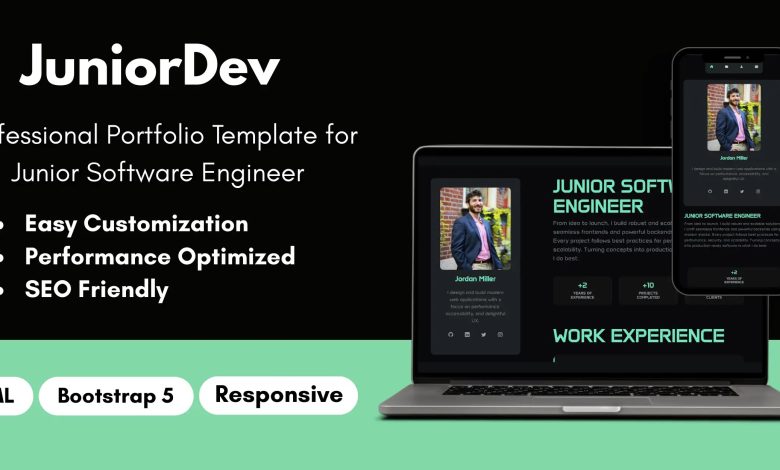How to Build a Strong Developer Portfolio

A strong developer portfolio is essential for landing your first job, freelance projects, or internships. It demonstrates your skills, creativity, and ability to solve real-world problems. A well-crafted portfolio can set you apart from other candidates, even if you have limited professional experience.
In this article, we’ll cover how to build a standout developer portfolio, what to include, and best practices to impress employers and clients.
1. Understand the Purpose of a Portfolio
- Showcase Skills: Demonstrate your coding, problem-solving, and technical expertise.
- Highlight Projects: Share real-world projects you’ve built or contributed to.
- Tell Your Story: Explain your learning journey, career goals, and achievements.
- Provide Contact Information: Make it easy for recruiters or clients to reach you.
2. Choose the Right Platform
- GitHub Pages: Host your portfolio directly from a repository.
- Netlify or Vercel: Free hosting for web projects with continuous deployment.
- WordPress or Wix: Easy drag-and-drop website builders for simple portfolios.
- Custom Website: Build your own portfolio using HTML, CSS, JavaScript, or frameworks like React.
💡 Tip: A personalized domain (e.g., yourname.dev) adds professionalism.
3. Include Key Sections in Your Portfolio
3.1 Introduction/About Me
- Briefly describe who you are, your skills, and career goals.
- Keep it concise and engaging.
3.2 Skills
- Highlight programming languages, frameworks, tools, and soft skills.
- Use visual indicators like skill bars or icons to make it appealing.
3.3 Projects
- Include 3–5 of your best projects.
Each project should have:
- Title and short description
- Technologies used
- Screenshots or live demo
- Link to GitHub repository or deployed project
- Prefer projects that solve real-world problems or showcase creativity.
3.4 Resume/CV
- Provide a downloadable PDF version of your resume.
- Ensure your resume matches the information on your portfolio.
3.5 Contact
- Include a form, email address, or LinkedIn link for easy communication.
- Optional: Social media links (LinkedIn, GitHub, Twitter).
4. Showcase Personal Projects and Contributions
- Open-source contributions on GitHub demonstrate collaboration and teamwork.
- Side projects highlight passion and initiative.
- Hackathon projects or freelance work can also be included.
5. Focus on Design and User Experience
- Keep navigation simple and intuitive.
- Ensure your portfolio is mobile-friendly and responsive.
- Use clean layouts and readable fonts.
- Highlight your projects visually with screenshots, gifs, or videos.
6. Add Testimonials or References (Optional)
- Include feedback from instructors, mentors, or clients if available.
- Testimonials build credibility and showcase professionalism.
7. Continuously Update Your Portfolio
- Add new projects and skills as you grow.
- Remove outdated or less impressive work.
- Regular updates show that you are active and committed to learning.
8. Promote Your Portfolio
- Share the link on LinkedIn, GitHub, resume, and social media.
- Include it in job applications and freelance profiles.
- Engage in communities and forums to gain visibility.
Conclusion
A strong developer portfolio is more than just a collection of projects—it’s a reflection of your skills, growth, and professionalism. By showcasing relevant projects, highlighting your skills, and keeping your portfolio visually appealing and updated, you increase your chances of landing your dream job or freelance opportunities.
Remember, your portfolio is often the first impression recruiters and clients will have of you—make it clear, engaging, and memorable.

